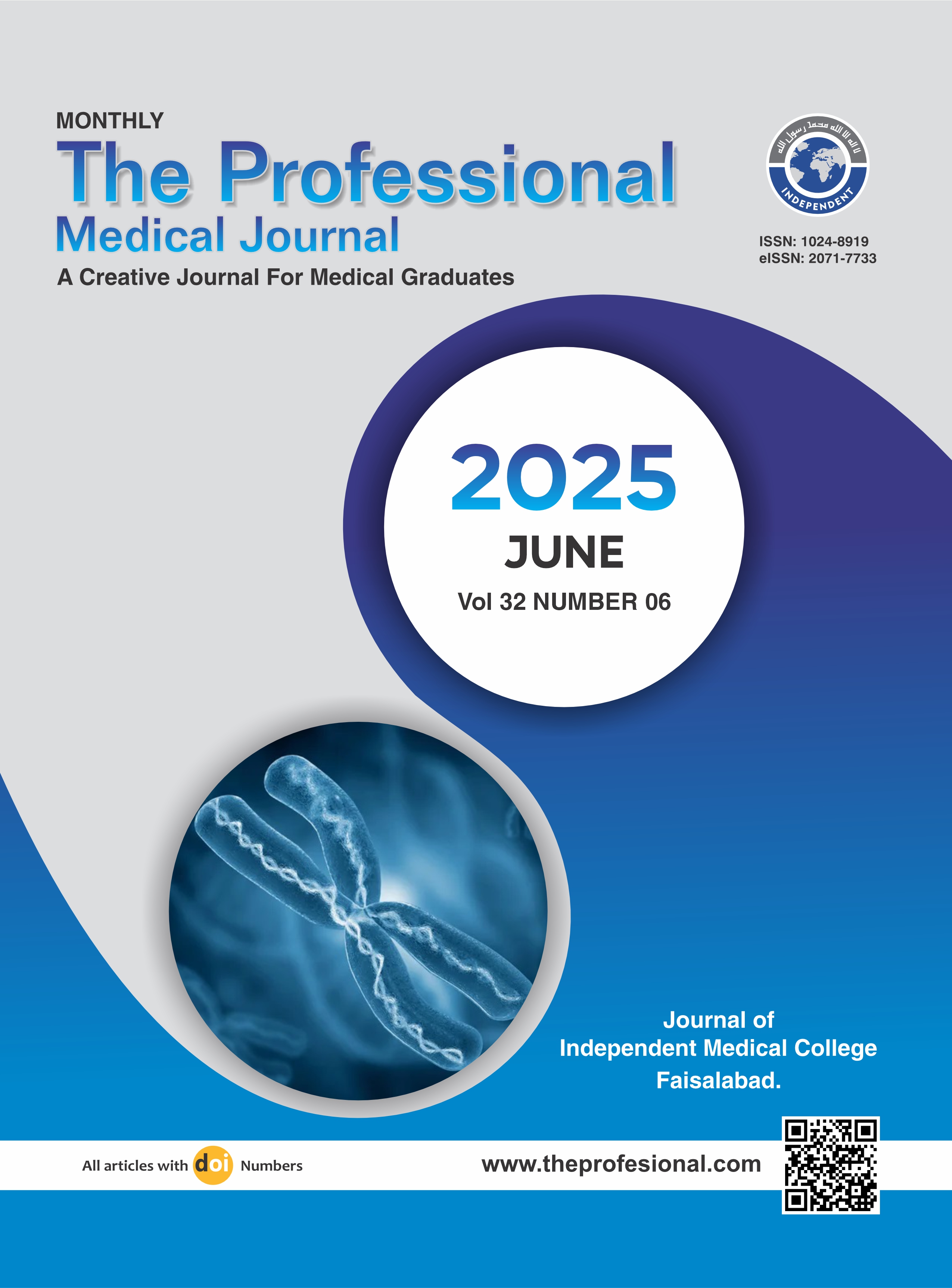Incidence of vaginal birth after previous cesarean section and fetal outcomes in a tertiary care hospital in Peshawar.
DOI:
https://doi.org/10.29309/TPMJ/2025.32.06.8851Keywords:
Cesarean Section, Infection, Low Birth Weight, Uterine Rupture, Vaginal BirthAbstract
Objective: To determine the frequency of vaginal birth after one cesarean section, along with fetal outcomes. Study Design: Cross-sectional study. Setting: Department of Gynecology and Obstetrics at Hayatabad Medical Complex, Peshawar, Pakistan. Period: January 2024 to July 2024. Methods: Women aged 20-40 years, history of one previous lower segment CS, and presenting in spontaneous labor with gestational age between 32 and 41 weeks, were analyzed. All women underwent a trial of labor in the labor room, with successful vaginal births after CS (VBAC) were noted. For those women who had unsuccessful attempts, were transferred to the operating room for emergency CS. Successful VBAC cases were monitored, and key fetal, and maternal outcomes were recorded. Data were analyzed using IBM-SPSS Statistics, version 26.0. Results: In a total of 149 women, the mean age, and gestational age were 27.62±4.93 years, and 37.81±1.67 weeks, respectively. VBAC was successful in 93 (62.4%) women. The mean duration of labor in successful VBAC, and unsuccessful VBAC were 8.96±7.20 vs. 11.67±8.40 hours (p=0.039). The body mass was significantly higher among women who underwent CS (p=0.031). Low birth weight (p<0.001), Apgar score <7 at 1 minutes (p=0.014), and NICU admission were significantly more among women were unsuccessful in undergoing VBAC. In terms of maternal outcomes, infection was significantly more common among women who were unsuccessful in VBAC (p=0.025). Uterine rupture occurred I 2 (3.6%) women who were unsuccessful in VBAC (p=0.014). Hospital stay was above 3 days in 5 (5.4%) women who had VBAC (p=0.030). Conclusion: This study highlights relatively high VBAC success rate with favorable maternal and fetal outcomes. Unsuccessful VBAC was associated with prolonged labor, increased maternal complications, and poorer neonatal outcomes.
Downloads
Published
Issue
Section
License
Copyright (c) 2025 The Professional Medical Journal

This work is licensed under a Creative Commons Attribution-NonCommercial 4.0 International License.


